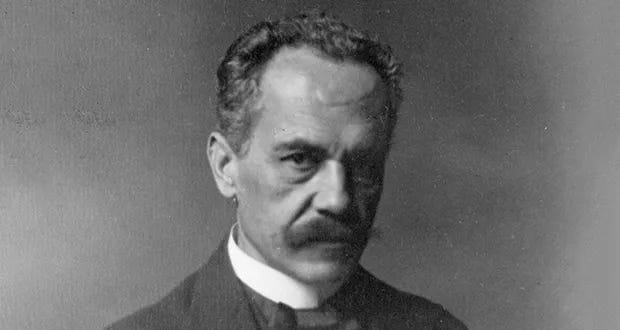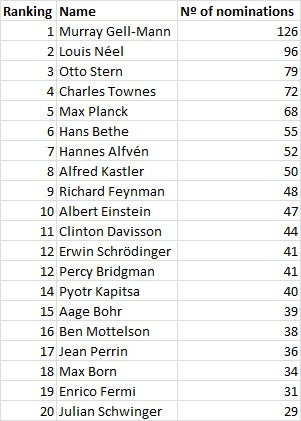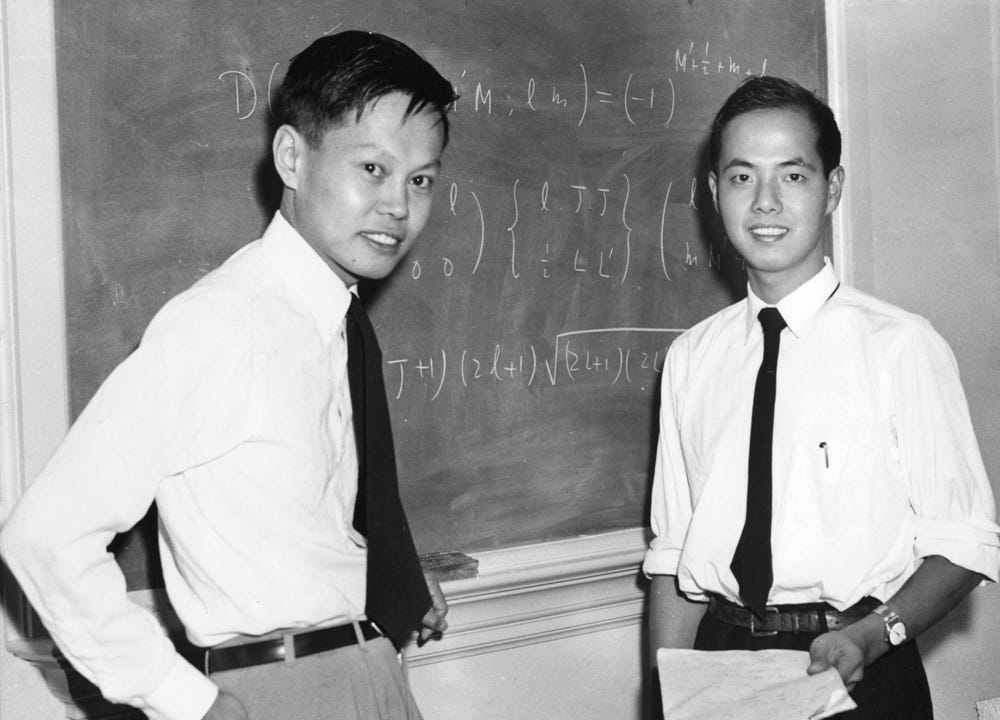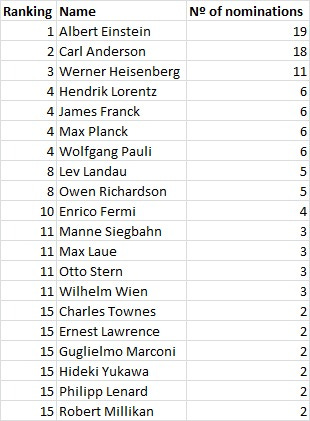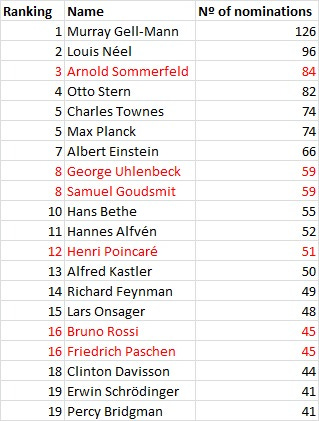A brief summary of the history of nominations in the Nobel Prize in Physics
Who are the most wronged and luckiest scientists in the history of the Nobel Prize in Physics?
It is available in the site of the Nobel Prize the list of all the nominees (and nominators) since the creation of the Prize until 1970 — the committee maintains the nominations secret for more than 50 years, so there are not data from 1971 head.
Based on this data, I did some exercises that sought to understand a little about the history of the Nobel Prize in Physics nominations. Below are some of the results.
All the data and the code I used (in R) to generate my results are available in my GitHub.
1º) Who are the most wronged scientists in the history of the Nobel Prize in Physics?
For ‘wronged’ I mean: those who were nominated for the prize the most times, but never received it. Below is the top 20, with the names ranked by number of times they were nominated for the prize.
Arnold Sommerfeld was the most wronged in the history of the Nobel Prize in Physics (at least with the data until 1970).
Here is his entry in Wikipedia, if you want to know his work.
2º) Who had to be nominated the most times before finally winning the prize?
Murray Gell-Mann had to be nominated 126 times until finally he won the prize, in 1969. Here is his entry in Wikipedia.
3º) Who are the scientists who won the prize most easily?
First, there are two guys who were nominated only one time (not one year — one nomination only!) before winning the prize. They are:
Nils Gustaf Dalén in 1912.
Gustav Hertz in 1925.
Dalén was nominated one time in 1912 and won this same year. Hertz was nominated one time in 1924, and won in 1925 (he was one time yet nominated, in 1926).
Obs.: if you see my code, you will see that four more people were nominated only one time and yet won the prize. They are: Antony Hewish, Arno Penzias, Kai Siegbahn, and William Fowler. Why didn’t I include these other 4 here as the luckiest too? Because they won the prize after 1970, so it is possible — indeed, probable — that they were nominated more times before winning (because we have data until 1970, there is not a way for we to know that yet).
But what if I told you that there were two people who won the prize yet were never nominated (at least, never nominated until 1970)? Yes, two guys did this feat: Tsung-Dao Lee and Yang Chen-Ning in 1957.
(Either they really weren't nominated, or there was an error on the Nobel Prize website. You can check for yourself the list of all the 1957 nominees here. They're not on the list — and my code shows that they don't appear in any year).
Maybe they were nominated after 1970, who knows. I believe that Yang Chen-Ning, in particular, may have been nominated many times after the consolitation among the theoretical physicists (from the 70s onwards) of the Yang–Mills theory, a theory developed by Yang Chen-Ning and Robert Mills that is one of the fundamental pilars of the Standard Model of particle physics.
Ps.: This section did not make a value judgment on whether or not these names deserved to win the prize — it only listed those who most “easily” won the prize.
4º) Who were nominated most times after winning the prize?
Typically, after an individual wins the prize, they are no longer nominated (Murray Gell-Mann, for example, was wildly nominated until 1969, but he received zero nominations in 1970). However, there are some exceptions. Here is the list of individuals who were nominated the most times from the year following receipt of the prize (and the respective number of times they were nominated).
Albert Einstein won the prize in 1921, but received 17 (!) nominations in 1922 and 2 more in 1923.
Carl David Anderson won the prize in 1936 for the empirical discovery of the positron (the antimatter of the electron) in 1932. But he received a lot of nominations until the end of his life probably for the discovery of the muon in 1936 along with Seth Neddermeyer (curiously, the same year he received the prize).
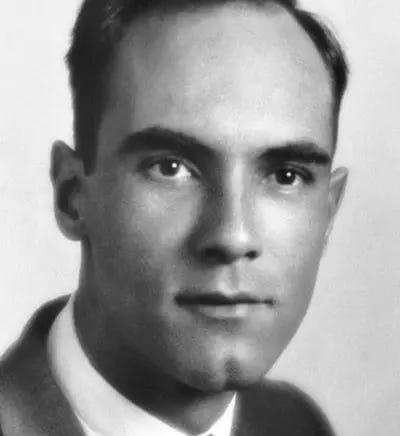
5º) Aggregate ranking
Here is a ranking of the 20 most frequently nominated individuals (until 1970) for the prize, regardless of whether they won the prize, or whether they received the nomination before or after winning the prize. The result below is the aggregation, let's say, of the previous results.
6º) Conclusion remarks
I would like to see an exercise similar to this for the other Nobel Prizes (mainly chemistry and medicine/physiology). Anyone who wants to do it has my support. The skeleton of the script in R to do this is already ready (available here). All that remains is to copy and paste the list of nominees from the Nobel website into an Excel spreadsheet (it's a monotonous job, but it doesn't take more than 20 minutes if done efficiently).
The exercises above show static aggregated results. An interesting exercise to do would be to display such results dynamically: a dynamic graph (for example, in video format) of nominations over time (like this one). Anyone who wants to do this, using my spreadsheets as a basis, is more than welcome.
In any case, these exercises served to answer intellectual curiosities that I — a layman interested in the history of science (and, in particular, of physics) — had. Maybe it will be of interest to you too.




